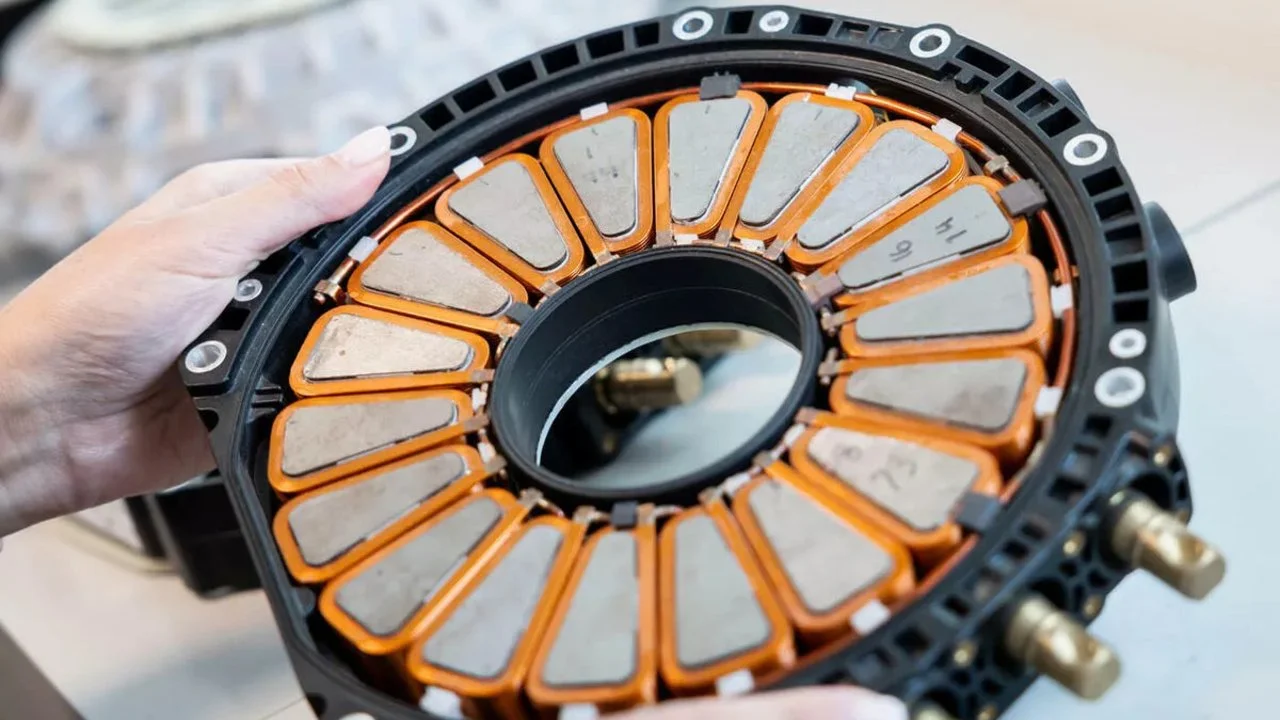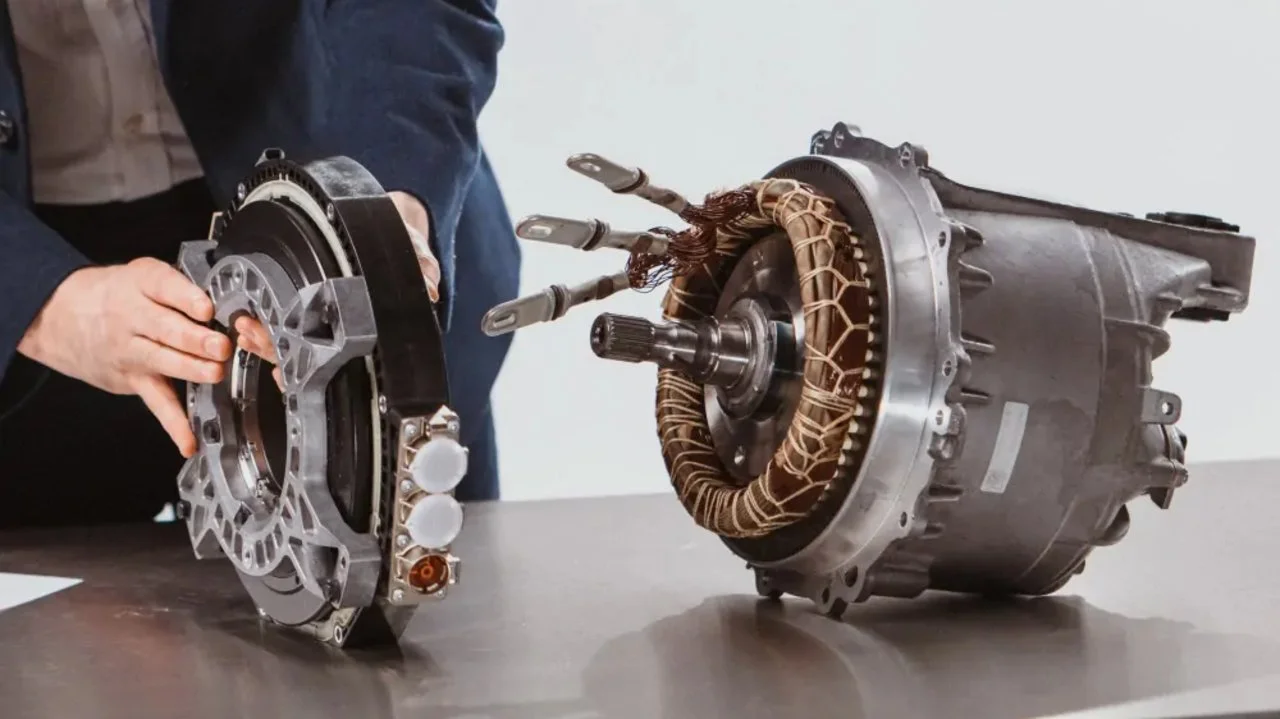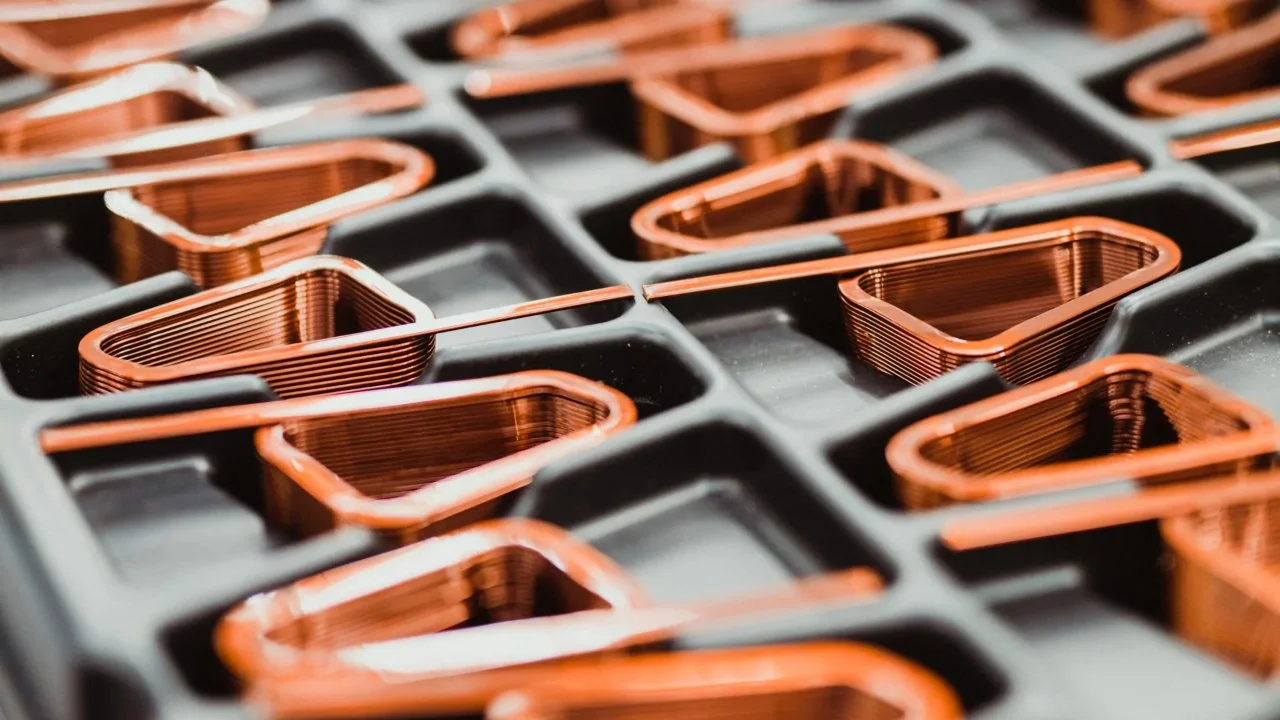Is This 29-Pound Electric Motor Magic or Just Brilliant British Engineering?
Image Credit: Yasa.
Every so often, something comes along in the world of engineering that makes you sit back, scratch your head, and wonder if someone's been dabbling in the dark arts. We've had batteries that charge faster, tires that practically glue themselves to the road, and aerodynamics that could suck a golf ball through a garden hose. But this? This latest bit of wizardry from the sceptered isle is on another level entirely. It's a piece of tech so mind-bogglingly potent and impossibly small that I'm half-expecting its creators to be wearing pointy hats and stirring a cauldron.
Let me introduce you to my new favorite party trick, an electric motor from a British company called Yasa. This little dynamo weighs a feather-light 28.8 pounds. For context, that's about the same as a healthy Corgi, a well-stuffed carry-on bag, or my sense of dignity after trying to assemble flat-pack furniture. It's tiny. You could probably pop it in a backpack. Yet, this diminutive device, this pipsqueak of propulsion, produces… 738 horsepower.
Image Credit: Yasa.
Twenty-nine pounds, seven hundred and thirty-eight horsepower. That's a power-to-weight ratio that doesn't just bend the rules of physics; it snaps them over its knee, throws them in a fire, and dances around the flames. We're talking about a motor lighter than a single wheel and tire on a Bugatti that produces more power than a Lamborghini Huracán Performante. If that's not witchcraft, then my name is Gwendoline the Good.
Of course, Yasa isn't some back-shed operation run by warlocks. They happen to be a wholly-owned subsidiary of Mercedes-Benz, which tells you this isn't just vaporware. They are the go-to folks for high-end electric motivation, already supplying the electric bits for supercar royalty like Ferrari and Lamborghini. The new V12 hybrid Lamborghini Revuelto? It has Yasa motors. The successor to the Huracán, the Temerario? That's got a pair of them on the front axle, too. But even those impressive units are chunky old things compared to this new masterpiece.
Image Credit: Yasa.
To really grasp how ridiculous this is, let's look at the competition. Not long ago, the Koenigsegg "Dark Matter" motor was the talk of the town, a beast producing 800 horsepower. Sounds great, until you learn it tips the scales at 86 pounds. Yasa's new motor offers nearly the same punch for one-third of the weight. Then there's the Australian Equipmake HPM-400, once considered a leader in power density. It delivers a respectable 536 horsepower but weighs a portly 88 pounds. Yasa's creation makes these other cutting-edge motors look like they've been hitting the pie shop a little too hard.
So, how have they done it? Did they trap a lightning god in a can? Have they made a pact with some otherworldly being? According to Yasa's founder and CTO, Tim Woolmer, the secret isn't some unobtanium material mined from a fallen meteor. He revealed that the motor contains no exotic, hyper-expensive stuff like cobalt-iron laminations or special litz wire. It's all down to clever design, specifically the "axial flux" architecture they pioneered. Yasa has basically reinvented the shape of the electric motor from a can of soup into a pancake, a design that is a magnitude lighter and far more efficient.
Image Credit: Yasa.
Mr. Woolmer said: "What we've achieved here is not just a number – it's a demonstration of scalable, production-ready innovation that raises the bar for electric motor design." And then, with what I can only imagine was a mischievous glint in his eye, he added: "And the most exciting part? We're just getting started." Oh, good. Because 738 horsepower from something the size of a birthday cake was clearly not ambitious enough.
Naturally, the first place you'll see this pocket-sized supernova is in something ludicrously fast and eye-wateringly expensive. Mercedes has already shown off its AMG GT XX concept, a monster that uses three Yasa motors to generate over 1,341 horsepower. A production version is coming, which means a Mercedes with the power of a small sun is just around the corner. But the implications are far, far bigger than just making supercars even more super.
Image Credit: Yasa.
Think about it. The heaviest single component in most electric cars, after the battery, is the motor assembly. If you can slash that weight by two-thirds, the knock-on effects are immense. A lighter car needs a smaller, lighter battery to achieve the same range. It needs smaller, lighter brakes to stop. It needs a lighter suspension to hold it up. The car becomes more agile, more efficient, and more fun to drive. The entire vehicle enters a virtuous cycle of weight loss.
This isn't just about making a 200-mph EV. This is about the potential to make a normal electric family car that handles with the poise of a sports car. It's about electric airplanes that can finally carry more than two people and a packed lunch. It's about boats that can glide across the water with silent, efficient authority. This is a fundamental step-change in what electric power can do. So, while my inner cynic is screaming that it sounds too good to be true, the enthusiast in me is giddy with excitement. I am ready for a little more magic in my motoring life.





